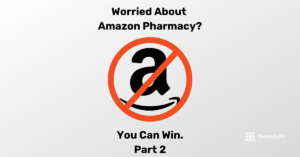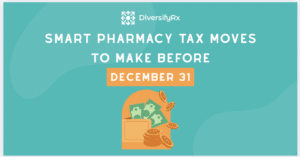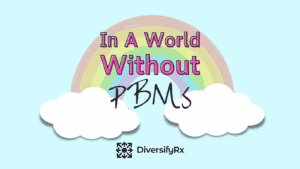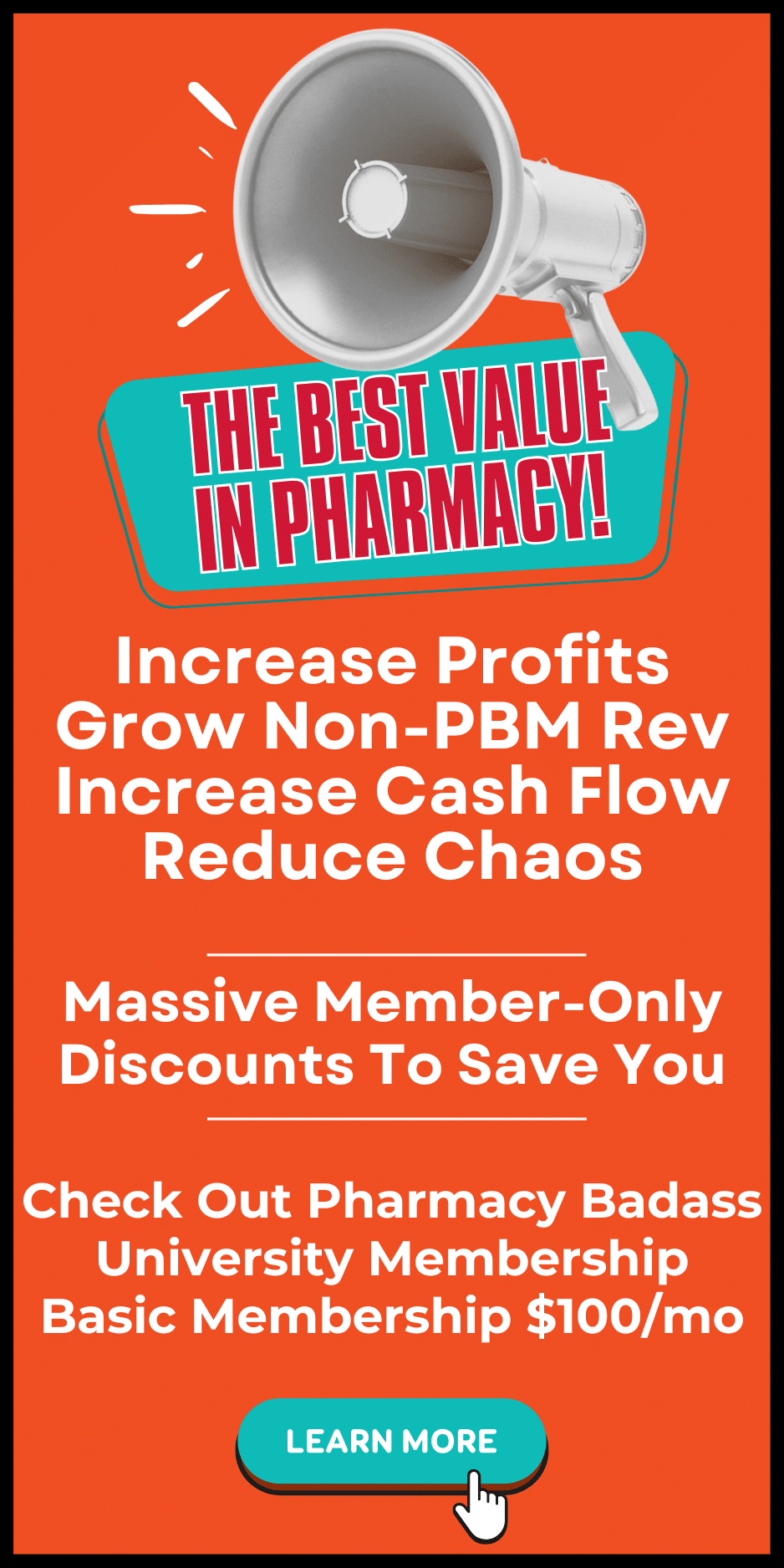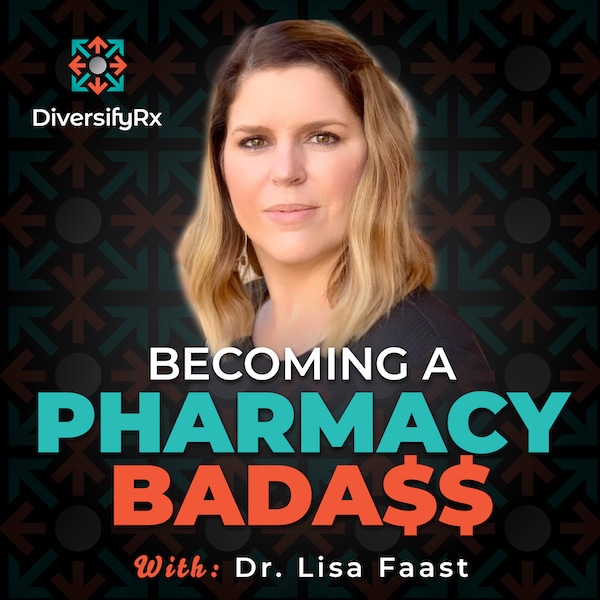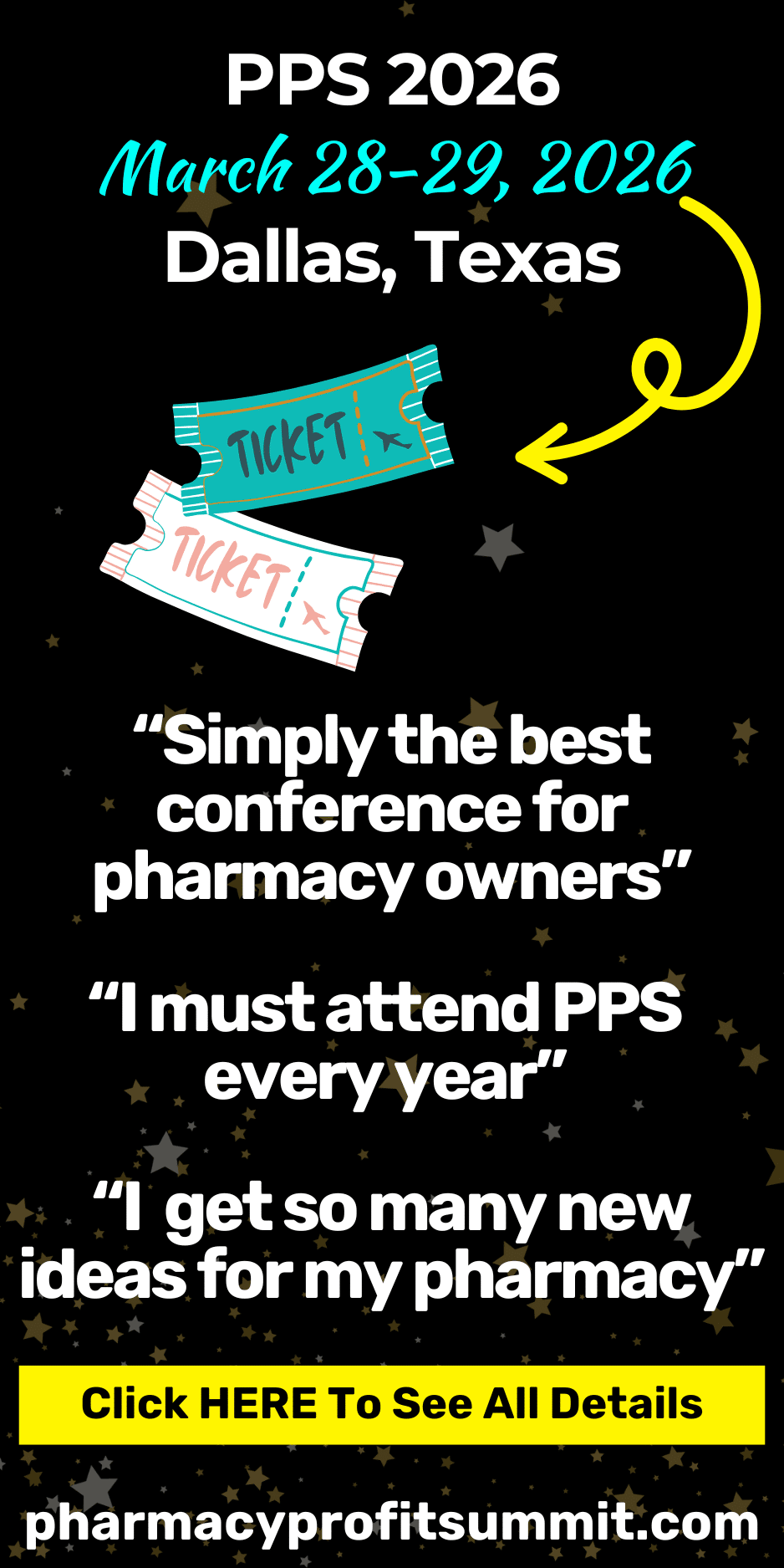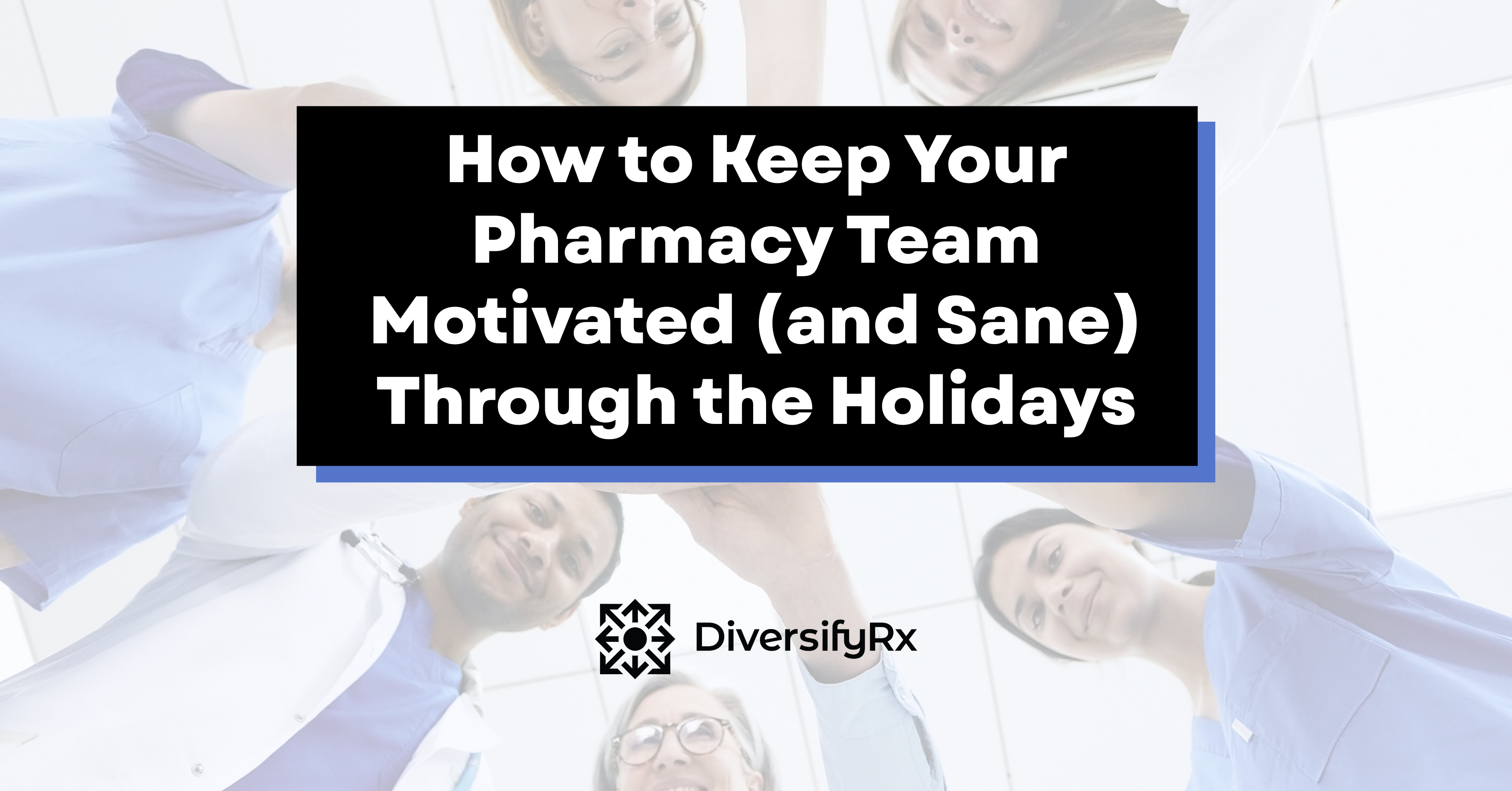To ensure the sustainability and success of a pharmacy business, one of the critical financial metrics to monitor is the Gross Profit Margin (GPM).
The gross profit margin is also called gross margin, profit margin, or gross profit. Understanding and managing this metric is crucial for making informed decisions, optimizing profitability, and maintaining the quality of pharmacy services.
Let’s review the Gross Profit Margin for pharmacy owners and how it impacts your independent pharmacy.
What is Gross Profit Margin?
Gross Profit Margin is a financial metric that calculates the percentage of revenue left after deducting the cost of goods sold (COGS). In the context of a pharmacy, the revenue represents the total income generated from selling medications, healthcare products, and services. At the same time, the COGS includes the expenses associated with purchasing medications and products for resale.
The formula for Gross Profit Margin is as follows:
Now, let’s explore why this metric is of paramount importance to independent pharmacy owners.
Profitability Assessment
The Gross Profit Margin is a direct indicator of a pharmacy’s profitability. A higher GPM indicates that a greater proportion of the revenue is retained as profit after covering the cost of acquiring products. This is of vital importance for generating profits, reinvesting in the business, and ensuring financial stability.
What should a pharmacy’s gross profit margin be? For a typical retail independent pharmacy, the prescription gross profit should be at least 22%. Any lower than that, then your pharmacy is at severe financial risk. Badass Pharmacy Owners should set a goal of at least 24% (as higher is better).
Pricing Strategy
Monitoring GPM helps pharmacy owners in setting appropriate pricing strategies for their products and services. By understanding your profit margins, you can strike a balance between offering competitive prices to attract patients and maintaining a healthy profit margin to sustain the business.
Cost Control
Analyzing GPM allows pharmacy owners to assess the efficiency of their supply chain management and vendor relationships. It may reveal opportunities to negotiate better deals with suppliers, explore generic drug options, optimize inventory levels, or even change suppliers.
Quality of Care
Maintaining a healthy GPM is not just about financial gain; it also impacts the quality of healthcare services provided. A profitable pharmacy can invest in staff training, modern equipment, and improved patient services, ultimately enhancing patient care and satisfaction.
Adaptation to Industry Changes
Pharmacy best practices are subject to constant changes, including shifts in drug pricing, insurance reimbursements, and regulations. Monitoring and keeping a strong GPM helps independent pharmacy owners adapt to these changes proactively and make informed decisions to mitigate potential financial risks.
How To Increase Your Gross Profit
- Move to an open relationship with your primary wholesaler
- Update your PMS pricing tables
- Take advantage of specials and coupons
- Optimize cash flow and pricing
- Increase winners
- Remove losers
1. Move to an open relationship with your primary wholesaler.
Are you tired of feeling restricted by your current relationship with your primary pharmacy wholesaler? Making the move to an open relationship will provide you with the freedom you need to explore new options and expand your pharmacy. By loosening the constraints of a traditional wholesaler partnership, you can build stronger connections with multiple sources and take advantage of better pricing and flexible delivery options.
Open relationships can also lead to greater transparency, more responsive customer service, and a healthier bottom line.
2. Update your PMS Pricing Tables
I know some of you haven’t updated your software since you started using it. That could be 10 to even 20 years ago! The problem with outdated PMS data is that your pricing formulas are likely inaccurate and, as a result, costing you money.
To increase your PBM reimbursements, you need to review your pricing formulas and alter them according to your pharmacy. I recommend partnering with Pricing Systems, as they will update your pricing formula system and customize it to your location to optimize your reimbursements properly.
When I updated my pricing formulas with Pricing Systems, I saw a $1–$3 increase per prescription reimbursement. Once you optimize your pricing formulas and know what works best for you, you can update these annually to ensure you receive the highest reimbursement possible.
Contact Robbie at rx******@***il.com to learn more about the Pricing System’s optimization process.
3. Take Advantage of Specials like Coupons
Use your coupons carefully! Different PBMs have different rules when it comes to using coupons, and often, there are restrictions on what classification you can use coupons for. For example, Caremark allows valid online coupons, but only for FDA-approved drugs, not supplements, 510(k) devices, or unapproved other products. A PBM will want to see your coupon use and copay collection to ensure you follow all coupon regulations.
4. Optimize Cash Flow and Pricing
Letting primary wholesalers hold onto your cash for an undetermined amount of time seriously strains your cash flow. You won’t even realize how much you’re paying your primary wholesaler until you see the transformation in cash flow after moving to a secondary seller. Instead of allowing a wholesaler to hold your money when waiting for rebates, you can pay a lower price altogether through a secondary wholesaler and keep your cash.
Our favorite alternative options for purchasing your inventory (these will improve cash flow & gross profit!!
Pharmacies are often tasked with balancing customer satisfaction and profits. One way to achieve the balance is to optimize cash pricing in your pharmacy. By offering competitive and transparent cash prices for medications, you can attract and retain customers while also increasing profits.
5. Increase Winners
One way to boost sales is by analyzing sales data to determine which products are selling at higher gross profit and then promoting them accordingly. Our favorite tool for analyzing your own data and getting access to a vast network of data information is Ugo Rx. Ugo is an amazing tool that will allow you to focus your growth strategies and drastically improve your profitability.
Although prescriptions will always dominate your sales, implement strategies to boost front-end purchases to increase pharmacy profit margins. For example, suggest front-end products that pair with your patients’ prescription medication, such as supplements for nutrient-depleting medications.
6. Decrease Losers
One of the best ways to increase profits is to decrease the number of loser (aka negative margin) products in your pharmacy. Unfortunately, the world we are in allows pharmacies to be underpaid below cost. Ensure your staff knows exactly what you want to do with a negative margin prescription. Should they fill it? Should they try to change it? I recently went through this in my own pharmacy as our negative margin percentage of scripts was creeping higher and higher. I found out that my staff didn’t have clear instructions on what to do. Remember, they are not owners and won’t necessarily always think like you. It is best to be clear on what you expect them to do. To help bring our number of losers down, we signed up with RetailMyMeds. It’s a great way to offload the negative scripts for your patients while still retaining them as a patient and their profitable scripts.
If you’re looking to improve your business’s profitability, focusing on gross profit margin is key. A strong gross profit margin means that you’re able to retain more money from each sale and grow your bank account!
Have you ever wished there was a roadmap for success for pharmacy owners? That’s exactly what Pharmacy Badass University is. We will take you through each step that is needed for a successful pharmacy and give you support all along the way. We have options for every pharmacy owner. Check us out by clicking HERE.



